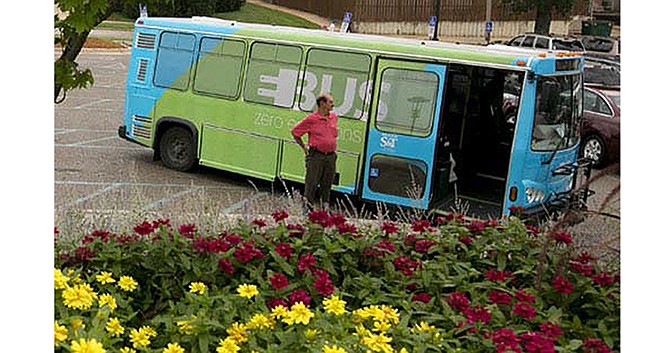Upcoming technology for driverless cars and smart roads dominated discussion at the recent 2015 Missouri Chamber Conference on Transportation.
"We team up with the Department of Transportation and other stakeholders each year to talk about the needs or the challenges that we face with our infrastructure and our transportation system," Dan Mehan, president and CEO of the Missouri Chamber of Commerce and Industry, said at Thursday's conference.
This year's theme was "Innovations in Transportation." Angela Rofus, director of the Office of Sustainable Energy and Engagement and former director of the Missouri Transportation Institute, gave a presentation on advanced autonomous electric vehicles.
"It is basically a driverless vehicle, a car that operates with no driver," Rolfus said. "You have heard it on the news with the Google driverless vehicles, and you think it is way out there and it is not going to be anything that is in Missouri. But Fort Leonard Wood is actually close to creating a demonstration project with fully-electric autonomous vehicles."
At the moment, Google might be leading the way with no one behind the wheel, but other companies and states are starting to get ready for this new trend in transportation, Rolfus said. Nissan, Audi and Mercedes Benz have released driverless concept cars; and Nevada, California, Florida and Michigan have passed legislation allowing driverless cars under certain conditions, according to Rolfus' presentation.
Rolfus estimated vehicles will be fully-automated by 2025 or 2030, and the technology is just as useful for personal reasons as it is for military and commercial purposes. However, she was not sure about what this new technology means for the automotive enthusiast who enjoys a good drive, as opposed to a safe ride.
"We just don't know what the possibilities could be," Rolfus said. "There are a lot of advantages associated with it: there is safety, there is less stop and go, less idling. So there are definitely improvements to the environment, air quality, and you have all this information on real-time transportation and travel data. It is right there because all the cars are smart."
Another presentation posed the question, "What about smart roads?" Kurt Rotering, senior transportation engineer for Iteris Inc., explained to the conference attendees what possibilities lay ahead of them with "Connected Communities."
"My presentation is about how there are sensors for all different types of infrastructure out in the city right now and how all of these things can talk to each other and how to connect all these things under one roof - I guess building an organization to make the whole city more efficient and safer and run together," Rotering said.
He explained there are already weather sensors in place in the road, which alert snow plow operators when the temperature drops. In the future, we could also have dynamic speed signs that change the speeds for certain roads when under emergency conditions, he continued.
These systems would communicate with and extrapolate data from each other to better inform the system users. These systems theoretically could also take data from smart cars to help alleviate traffic congestion and provide solutions to traffic problems, Rotering said.
However, the time it will take to implement this system is hard to calculate. Every town is different, and some larger, more metropolitan areas might do it easier because the ground work has been laid with high-tech, fiberoptic city infrastructures that are partially connected. But smaller cities could catch on faster because they have fewer people and fewer things to connect, Rotering said.
"The technology is there," he said. "Obviously new technology is coming out every day. Things are getting better. It is becoming easier to do this. It will be more important once the automatic vehicles start hitting the road here in five or 10 years."
Link:
"Missouri S&T autonomous electric vehicles" slide show presentation

